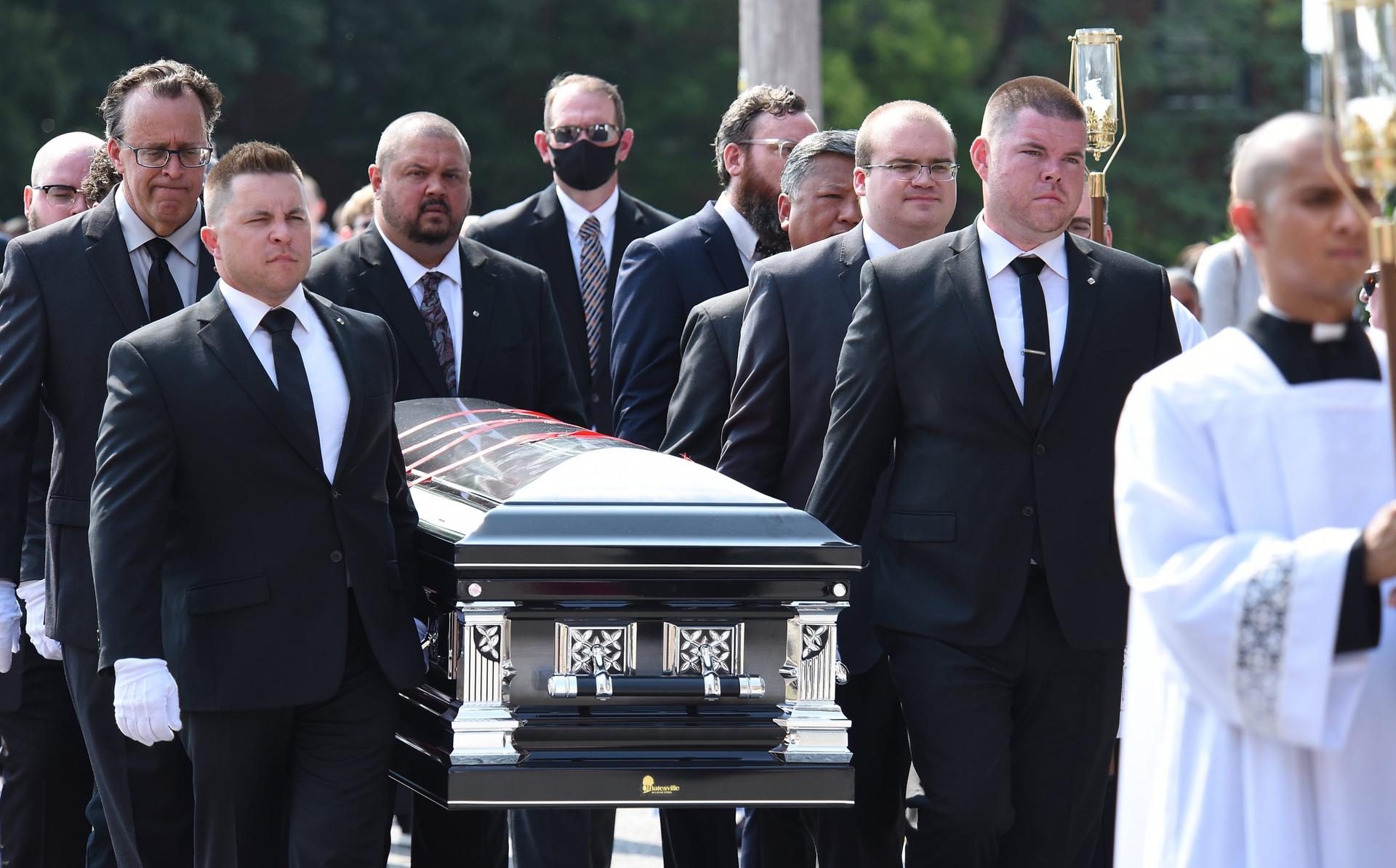CHATTANOOGA, Tennessee — Katie Helms stepped onto East 8th Street minutes before 11 a.m. as the nearby church bells continued their slow toll.
Helms, a bagpiper from Knoxville, had by her estimations played at dozens of funerals but she was hoping for a bit of spiritual anointing that morning as she inhaled to blow out the opening notes of “It’s a Long Way to Tipperary.”
Two rows of Knights of Columbus men, totaling 23, moved in half steps behind Helms to flank the white Cadillac hearse. Sweat from the rippling July heat soaked the hair visible between their black berets and navy suit coats.
A different group of men gathered at the back of the hearse made a last-minute adjustment — leave the cart behind, the casket would be carried.
Nearby, a woman standing in denim overalls in the shade of their apartment’s entryway remarked, “I’ve been to a lot of Catholic funerals, but nothing like this.”
Last Saturday morning, the procession of around a hundred people shuffled the two blocks west into the sanctuary of the Basilica of Saints Peter and Paul, where Bishop Richard Stika of the Diocese of Knoxville looked over the casket.
“My brother in Christ, Father Patrick Ryan, welcome home,” Stika said.
The special mass marked another step in the yearslong effort to see if Ryan, a Catholic priest in Chattanooga in the late 19th century, will qualify for sainthood, one of the most venerated positions in the church.
Ryan died on Sept. 28, 1878, at age 33 while serving the sick in Chattanooga during an outbreak of yellow fever. During the outbreak, 366 people died from the disease and around 80 percent of the city’s population left. The priest chose to stay.
Ryan was first buried in a church building that later became the Basilica of Saints Peter and Paul. His remains were moved to Mt. Olivet Cemetery in 1886, when the cemetery opened. In 2019, the diocese got permission from the Hamilton County Health Department to remove Ryan’s remains. That exhumation occurred last week, 135 years after he was buried, and his body was returned to the Basilica as his process for sainthood continues.
“There is no greater gift than to give one’s life for one’s friend,” Stika told the crowd. “Father Ryan did indeed give his life for his friends. Friends that were not Catholic. Friends that were Catholic. Friends that he did not know. But when the rest of the city abandoned so many, Father Ryan stayed knowing that at some point that mosquito bite that traveled from the Louisiana area, following the rivers, would eventually take his life as well.”
Stika said Ryan’s legacy provides an example of how to live in dangerous and uncertain times, not unlike the ongoing COVID-19 pandemic. The priest cared for others, Stika said, emphasizing that getting the COVID-19 vaccine can protect communities and end the pandemic.
Ryan’s casket was placed in a special area at the front of the church near the altar. Dirt from his burial site at Mt. Olivet was sprinkled on the casket and people who have prayed to Ryan to intercede on their behalf dropped flowers there.
The process of sainthood requires proof the candidate existed and is not a local legend. Ryan has been declared a “servant of God,” one of the first steps in the process of canonization that requires the possible saint to be responsible for at least two miracles.
In September, the bishop visited the basilica as the diocese announced a special committee to investigate Ryan’s life for any reason why the priest would not be eligible for sainthood.
Father J. David Carter said the inquiry continues to interview people who prayed to Ryan to intercede for them.
“None of them right now are candidates for an official miracle that would go through the scrutiny that the church requires to declare him ‘blessed’ or ‘saintly’ but we are of course still open to this possibility and praying that Father Patrick Ryan might show that he has that closeness to God and that he might intercede on behalf of whomever might invoke his name,” Carter said after the service.
The inquiry hopes to end its work and send its findings to Rome near the end of the year, Carter said.












